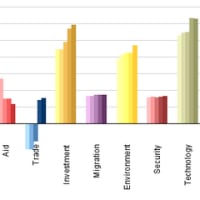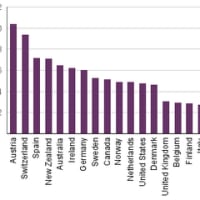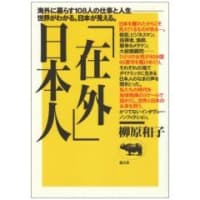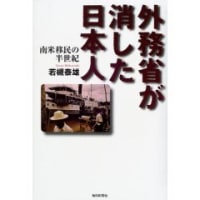フィリピンへの労働者送金
6月のフィリピン出身の海外出稼ぎ労働者の母国への仕送り(=労働者送金)が月ベースで最高額を記録したようだ。その額は15億ドル。昨年同月比で30%の増加だそうだ。6月は新学期が始まる直前の時期。送金の主な使途は衣食住、医療費、家屋や土地の購入とならんで教育費が大きな割合を占めるといわれているが、それを裏付ることになろう。
何度聞いても驚いてしまうのだが、おおよそ人口の10%にあたる800万人のフィリピン人が海外で働いている。送金はGDPの15%に相当するなど、出稼ぎが国家あげての最大の産業だ。
送金額の増加の理由として、技術をもった出稼ぎ者が増えたことによる個別の送金額の上昇、それに加えて、ペソ高と、それに伴い労働者がより高額の送金を迫られていることが主な理由とされている。正規ルート送金の手数料が低下してきていることで、非正規ルートの送金が減り、よって公式統計上の送金が増えているだけだと指摘する専門家もいる。
労働者送金が毎月のように過去最高額を更新し続けているのは実はフィリピンだけではない。アジアの主要送り出し国のほぼすべてで、送り出す労働者の数、送金の額ともに記録が塗り替えらるという状況がここ2-3年つづいている。たとえばバングラデシュでは2007年度の送り出し総数がが前年比で倍にまで増えた。
出稼ぎ者の増加には様々な背景がある。まず第一に石油原産国への出稼ぎ者数が驚くような速度で伸びていること、特にドバイの建築ラッシュとホテル開設ラッシュ(もちろん石油価格の高騰がその背後にある)でUAE(アラブ首長国)への出稼ぎ者が前年度比で倍以上に膨れ上がった国も多い。韓国やマレーシアも雇用に依然積極的だ。高度人材の獲得競争も激化の様相を見せている。
Philippines June remittances jump 30 pct yr/yr
Reuters - Friday, August 15MANILA, Aug 15 - Annual remittances into the Philippines rose 30 percent in June to $1.5 billion, a record monthly inflow, as more Filipinos got well-paid nursing jobs and sent money back for the start of the school year.
The June figure, released by the central bank on Friday, brought the six-month remittance level to $8.2 billion, up 17 percent from the same period last year.
Remittances from more than 8 million Filipinos working overseas, around 10 percent of the population, have boosted domestic consumption and the inflows help oil the wheels of the economy.
Despite a global economic slowdown, the number of Filipino workers deployed in the January to June period climbed by a third from a year earlier, government data showed.
Inflows are traditionally strong in June, when schools resume, as people send home cash to pay for fees, books and uniforms.
Analysts said a weaker peso <PHP=> against the dollar could also have encouraged Filipino workers to send more home as they would get more pesos for dollars after suffering the effects of a strong peso last year.
"Filipinos working overseas have views on the currency also," Luz Lorenzo, an economist with ATR-Kim Eng Securities, said.
"That is also influencing them, so they may choose to send more if they think the dollar will weaken."
The Philippine peso, last year's best performing Asian currency, dipped 0.6 percent to 45.23 per dollar on Friday, its lowest level in nearly a month.
The peso has lost nearly 9 percent so far this year, a reversal from last year's 19 percent gain.
The central bank expects the inflow of remittances sent through official channels to touch $15.9 billion by the end of the year, a fresh record, up 10 percent from last year's peak.
The central bank said June's monthly inflow was the highest since 1989, when it started to classify foreign exchange inflows from overseas workers as a separate category.
6月のフィリピン出身の海外出稼ぎ労働者の母国への仕送り(=労働者送金)が月ベースで最高額を記録したようだ。その額は15億ドル。昨年同月比で30%の増加だそうだ。6月は新学期が始まる直前の時期。送金の主な使途は衣食住、医療費、家屋や土地の購入とならんで教育費が大きな割合を占めるといわれているが、それを裏付ることになろう。
何度聞いても驚いてしまうのだが、おおよそ人口の10%にあたる800万人のフィリピン人が海外で働いている。送金はGDPの15%に相当するなど、出稼ぎが国家あげての最大の産業だ。
送金額の増加の理由として、技術をもった出稼ぎ者が増えたことによる個別の送金額の上昇、それに加えて、ペソ高と、それに伴い労働者がより高額の送金を迫られていることが主な理由とされている。正規ルート送金の手数料が低下してきていることで、非正規ルートの送金が減り、よって公式統計上の送金が増えているだけだと指摘する専門家もいる。
労働者送金が毎月のように過去最高額を更新し続けているのは実はフィリピンだけではない。アジアの主要送り出し国のほぼすべてで、送り出す労働者の数、送金の額ともに記録が塗り替えらるという状況がここ2-3年つづいている。たとえばバングラデシュでは2007年度の送り出し総数がが前年比で倍にまで増えた。
出稼ぎ者の増加には様々な背景がある。まず第一に石油原産国への出稼ぎ者数が驚くような速度で伸びていること、特にドバイの建築ラッシュとホテル開設ラッシュ(もちろん石油価格の高騰がその背後にある)でUAE(アラブ首長国)への出稼ぎ者が前年度比で倍以上に膨れ上がった国も多い。韓国やマレーシアも雇用に依然積極的だ。高度人材の獲得競争も激化の様相を見せている。
Philippines June remittances jump 30 pct yr/yr
Reuters - Friday, August 15MANILA, Aug 15 - Annual remittances into the Philippines rose 30 percent in June to $1.5 billion, a record monthly inflow, as more Filipinos got well-paid nursing jobs and sent money back for the start of the school year.
The June figure, released by the central bank on Friday, brought the six-month remittance level to $8.2 billion, up 17 percent from the same period last year.
Remittances from more than 8 million Filipinos working overseas, around 10 percent of the population, have boosted domestic consumption and the inflows help oil the wheels of the economy.
Despite a global economic slowdown, the number of Filipino workers deployed in the January to June period climbed by a third from a year earlier, government data showed.
Inflows are traditionally strong in June, when schools resume, as people send home cash to pay for fees, books and uniforms.
Analysts said a weaker peso <PHP=> against the dollar could also have encouraged Filipino workers to send more home as they would get more pesos for dollars after suffering the effects of a strong peso last year.
"Filipinos working overseas have views on the currency also," Luz Lorenzo, an economist with ATR-Kim Eng Securities, said.
"That is also influencing them, so they may choose to send more if they think the dollar will weaken."
The Philippine peso, last year's best performing Asian currency, dipped 0.6 percent to 45.23 per dollar on Friday, its lowest level in nearly a month.
The peso has lost nearly 9 percent so far this year, a reversal from last year's 19 percent gain.
The central bank expects the inflow of remittances sent through official channels to touch $15.9 billion by the end of the year, a fresh record, up 10 percent from last year's peak.
The central bank said June's monthly inflow was the highest since 1989, when it started to classify foreign exchange inflows from overseas workers as a separate category.
















